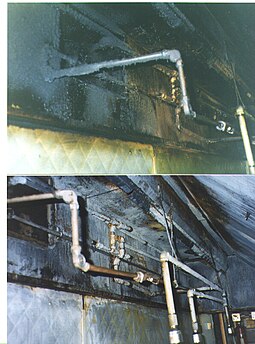Main Keyword Brand Name
#1 Best Restaurant & Facilities Kitchen Exhaust Cleaning Company
We apply NFPA #96 standards for Kitchen Exhaust System Cleaning
We provide a Health & Safety Certificate as per NFPA 96 standards along with before/after pictures when completed
We will provide our WSIB and Liability Insurance information before start of work





Keyword 1 (H2)
Content based on Keyword 1 – 250+ Words.
Keyword #2 (H2)
Keyword #2 Content | 250+ Words.
Keyword #3 (H2)
Keyword #3 Content | 250+ Words.

Our Fully Trained Service Technicians Follow The NFPA 96 (National Fire Protection Association) Standards for Hood & Kitchen Exhaust Cleaning.
Get Your Free Hood Cleaning Estimate Now!
We Have The World's Most Awesome Clients











Cleaning Processes
First, the exhaust system is scraped clean, but this step isn’t always required if the grease exhaust system has been well maintained using caustic chemicals and hot water, and last, the system is pressure-washed to remove any remaining debris and collect the dissolved grease and water. The National Fire Protection Association provides specific instructions for maintaining commercial kitchen exhaust systems (NFPA). How often the hood plenum has to be cleaned depends on the kind of food being cooked and the amount of grease-laden fumes being sucked up into the kitchen. One church may only need maintenance 10 times a year since they only use the system for special occasions, but another church that has a weekly Friday night fish fry would need more regular care. Monthly, bimonthly, quarterly, semiannually, and yearly cleanings are the norm.

Caustic Chemicals
To remove the grease, caustic chemicals might be used. The residue may then be removed by rinsing with hot water. Garden sprayers, chemical foamers, and pressure washers with downstream injection are the most common means of applying chemicals.
The chemicals are applied and let to sit on the grease for a while before being rinsed away with hot water. It may be necessary to utilize scrapers to remove excessive accumulation from contaminated surfaces, prior to the application of chemicals, in severe cases when grease buildup is too high for a chemical application and a rinse.
Hot Water Pressure-Washing
Machines that can both boil water and apply it at pressures of up to 2,000 psi are available for usage (14,000 kPa). Heavy strength tarps are hooked to the hoods, and then the tarps are slanted into plastic trash cans to collect the rainwater. Cans are emptied one at a time when they get full. In order to keep local drains from being clogged, the grease should be disposed of properly rather than just dumped in. Excessive grease accumulation in inaccessible ducting is one potential issue with inadequate horizontal duct cleaning. Grease may accumulate to dangerous levels in the ductwork between the hood and the fan on the roof after being pushed further into the ductwork by steam cleaners. In order to remove the buildup from inaccessible regions, businesses that use hot water techniques should use a caustic chemical degreaser to break down the grease before flushing the system with hot water and the degreaser.
Finishing
In order to make cleaning and maintaining hoods simpler, cleaners will typically polish them. The cleaning company will place a certification label on the hood of each cleaned kitchen exhaust system so that the authority having jurisdiction, insurance adjusters, and health inspectors can verify that the system complies with all applicable local, county, and state fire rules. White residue from industrial kitchen grease cleaning may be washed away using a solution of vinegar and warm water.
Regulation
Cleaning a kitchen’s exhaust system according to the National Fire Protection Association’s Standard 96 entails removing oil and other pollutants. Cleaning the kitchen exhaust system on a regular basis is crucial for fire prevention in commercial kitchens. Cleaners that specialise in the cleaning of kitchen exhaust systems use high-pressure water or chemicals to remove grease and other pollutants. Clean kitchen exhaust systems are necessary for many communities to meet NFPA 96, the National Fire Protection Association’s Standard for Ventilation Control and Fire Protection in Commercial Kitchens. Cleaning kitchen exhaust hoods is a specialist task best left to those who have received the appropriate training and certification.
Industry Education
Associations have been created to educate those who clean kitchen exhaust systems on the requirements of NFPA 96 and the best practises in the industry. A few examples are:
Hood and duct cleaners in North America are represented by the Power Washers of North America, and those throughout the world by the International Kitchen Exhaust Cleaners Association.
What People Are Saying
See what our customers are saying about us



Brand Areas Served
Follow Us









